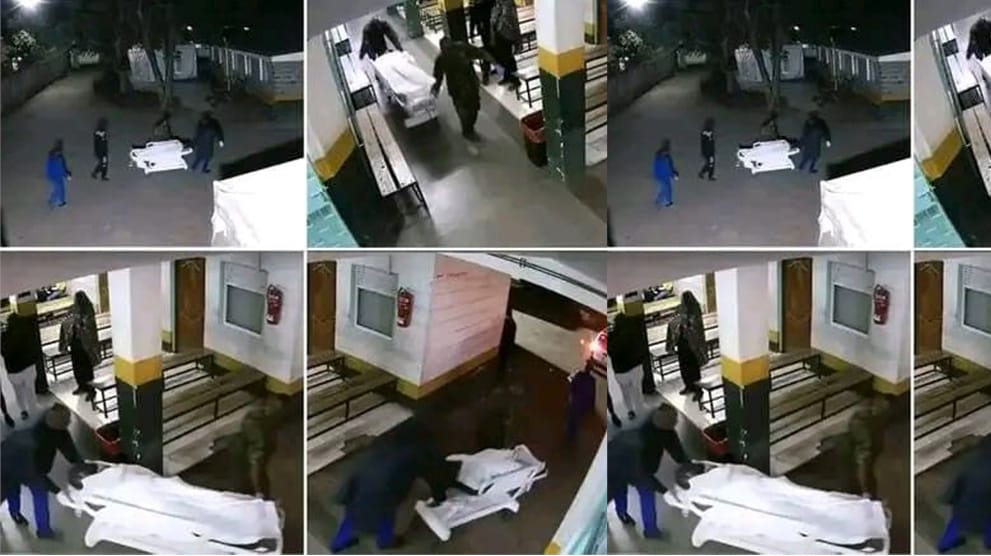Kenya is on edge following the shocking death of Albert Ojwang, a prominent blogger, while in police custody. What initially appeared to be a tragic incident has since unravelled into what looks increasingly like a calculated cover-up.
The situation has provoked national outcry, triggered political statements from the highest levels of government, and reignited a long-standing debate on police brutality and accountability in Kenya. The pivotal element in this emerging case? CCTV footage—some of which was mysteriously deleted, while other portions survived.
The footage that did survive has opened a Pandora’s box of unsettling questions. Why were police officers wearing gloves while handling a detainee? Why was Ojwang left alone in the back of a car outside the hospital for over ten minutes? And most importantly, was he already dead?
This article dives deep into the evolving timeline, dissects the available surveillance videos, and explores the implications of evidence tampering in a case that could reshape public trust in law enforcement. It’s not just a story about a man’s death—it’s about the justice system’s integrity and a nation’s cry for accountability.
Albert Ojwang wasn’t just another name lost in the bureaucracy of the Kenyan justice system. He was a vibrant, outspoken voice in Kenya’s blogging community—someone who used his platform to speak truth to power.
Ojwang had carved out a niche for himself online, known for covering political affairs, human rights issues, and police misconduct. His followers saw him as a watchdog, someone unafraid to ruffle feathers. It’s no surprise that his arrest on June 7th stirred a buzz on social media.

Before his tragic end, Ojwang lived in Nairobi, where he blended his day job as a freelance journalist with content creation. He had no prior criminal record, and his friends described him as peaceful and articulate.
His arrest was reportedly over “disorderly conduct”, though witnesses suggest it may have been a retaliatory move linked to his recent exposé on police abuse.
His sudden disappearance, followed by the chilling news of his death the next day, turned his case into a viral moment—one that has since spiralled into national rage.
People didn’t just lose a journalist—they lost a voice for the voiceless. In many ways, Ojwang became a symbol of the silenced, a martyr for transparency and justice in a nation where both are in short supply.
Understanding what happened to Albert Ojwang requires piecing together a complex timeline—one where every minute matters. The official police report initially stated he died while being treated at Mbagathi Hospital. However, this version has now been thoroughly debunked by forensic evidence and investigative journalism.
June 7th, 2025 (Evening): Albert Ojwang is arrested and taken to Nairobi Central Police Station. Witnesses say he was calm and cooperative.
June 8th, 2025 (Early Morning): Hospital CCTV shows a police vehicle arriving at Mbagathi Hospital at 1:35 AM.
1:35–1:46 AM: Officers remain seated inside the vehicle, leaving Ojwang unattended in the back seat.
1:46 AM: Officers exit the car, put on gloves, and retrieve a stretcher.
Post 2:00 AM: Ojwang is declared dead.
What raises alarms is the gap between his arrest and his arrival at the hospital—almost seven hours unaccounted for. And the most damning piece? IPOA confirmed Ojwang died inside the police cell, not at the hospital. That shifts the entire timeline and refocuses suspicion squarely on the officers in charge during his detainment.
This timeline shows deliberate delays, a mismatch in reports, and a suspicious lack of urgency from the officers involved. The timelines don’t just tell a story—they scream foul play.
CCTV footage can be the most objective witness in a criminal case—but only if it’s preserved. Unfortunately, in this case, key segments of footage were intentionally deleted.
The digital video recorder (DVR) at Nairobi Central Police Station was formatted on the morning of June 8th, wiping out all the recordings from the previous night. According to IPOA, a technician admitted to formatting the system, reportedly for a fee of KSh 3,000.
However, not all eyes were closed. At Mbagathi Hospital, external surveillance captured the police arriving with Ojwang. The footage is troubling: officers kept their distance, showed no visible signs of urgency, and inexplicably wore gloves when approaching Ojwang’s body. There’s no record of them alerting hospital staff upon arrival.
This visual evidence is more than incriminating—it contradicts the officers’ official statement and paints a picture of a team attempting to control the narrative. If they had nothing to hide, why delete the footage from the station but leave the hospital recording untouched?
The contrasting presence of the hospital footage is what’s keeping this case alive—literally and legally. It proves that even amidst an attempted cover-up, digital footprints can survive, and the truth can claw its way to the surface.
Perhaps the most chilling detail caught on the Mbagathi CCTV footage is the officers wearing gloves. To a layperson, this might seem normal, but to medical and forensic experts, it’s highly unusual and deeply suspicious.
Why would officers wear gloves when handling a detainee? Unless there’s blood, bodily fluids, or infectious disease concerns, there’s no standard procedure requiring gloves, especially if they believe the person is still alive. The act of putting on gloves often indicates the expectation of handling a dead body or protecting oneself from contamination.
In this context, the gloves appear to serve two possible purposes: either they knew Ojwang was already dead and wanted to avoid contamination, or they were trying to cover their tracks.
Both interpretations are damning. Moreover, they waited nearly ten minutes before retrieving a stretcher, further fuelling suspicions that they were stalling or unsure how to handle the optics of the situation.
This isn’t just a minor detail—it could be a critical factor in the ongoing investigation. The gloves, or even the gloves’ residues, could offer DNA evidence. And the very act of using them may reveal the officers’ mindset at the time, a key component in determining premeditation or gross negligence.











